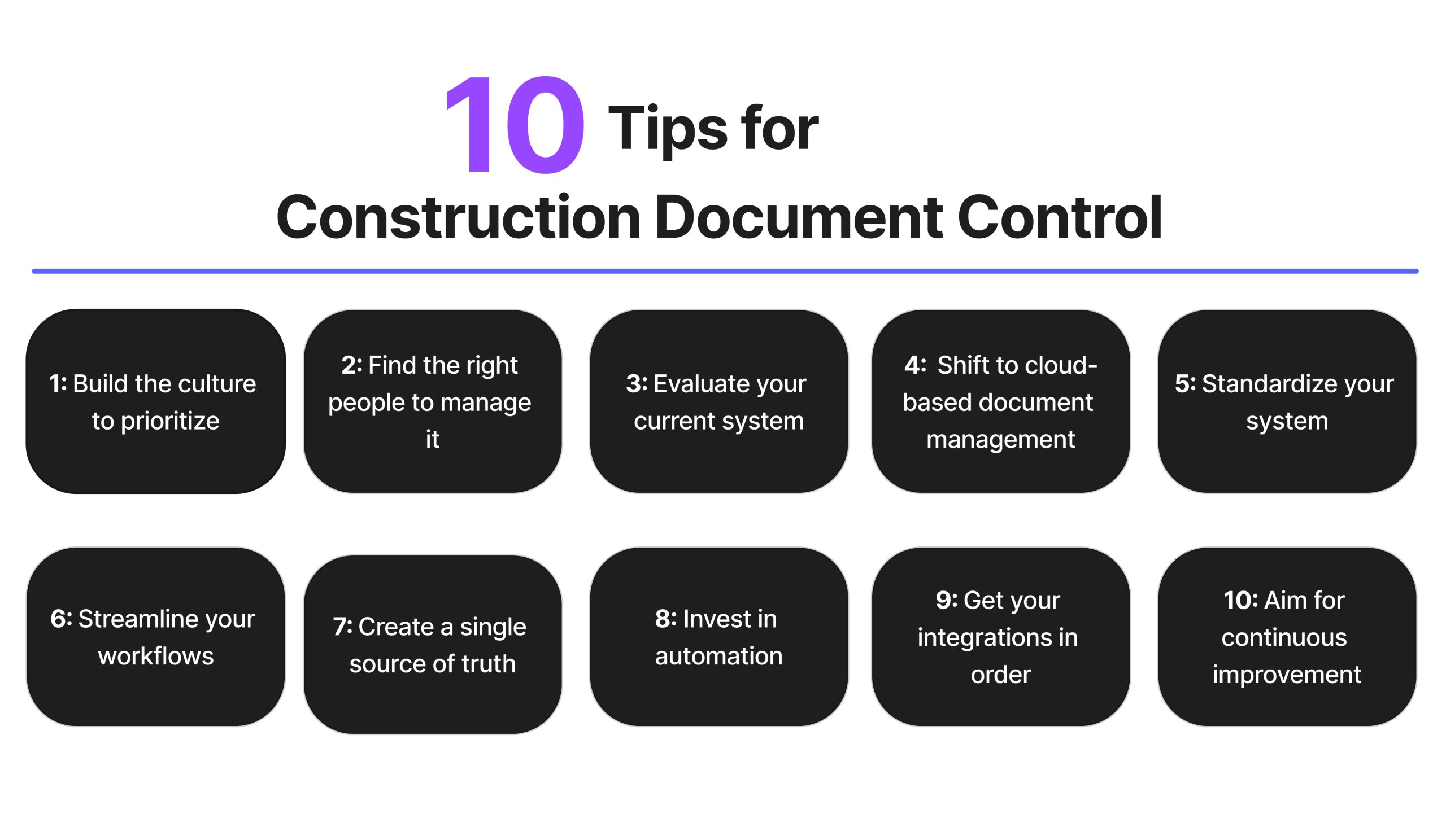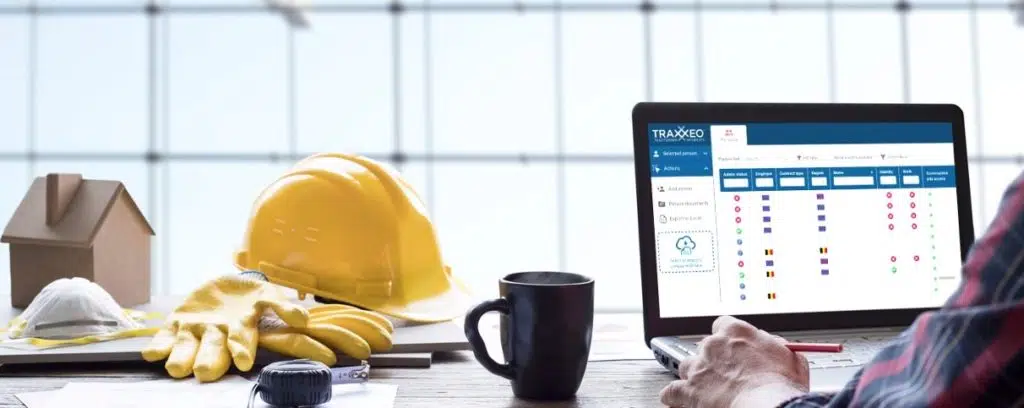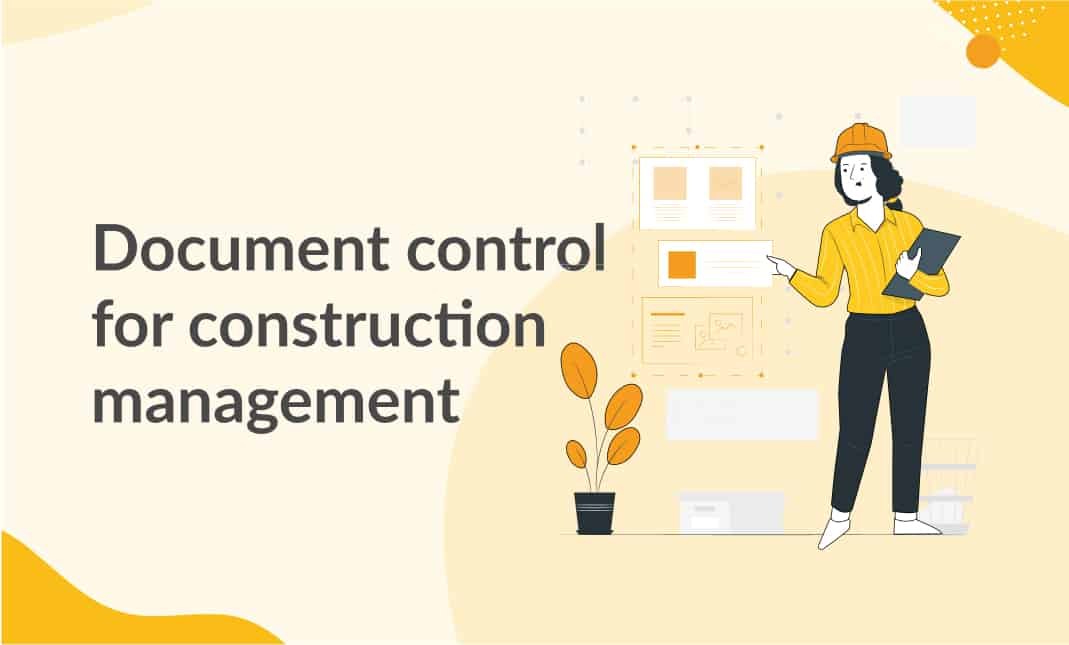Structure Better Projects: The Function of Construction Document Management in Success
Wiki Article
Engineer's Overview to Simplifying Construction File Management for Efficient Job Implementation
The process of arranging, sharing, and maintaining these records can frequently end up being a maze of ineffectiveness and setbacks if not handled diligently. By checking out organized techniques, cutting-edge devices, and industry ideal methods, engineers can not only streamline their file management procedures however additionally lead the way for much more efficient job execution.Relevance of Efficient Record Monitoring
Effective paper administration is necessary for designers in the building and construction market as it plays a critical function in making sure the effective execution of jobs. Proper organization and monitoring of these documents are crucial to preserve task timelines, guarantee compliance with policies, and promote efficient communication among task stakeholders.

Efficient document administration makes it possible for engineers to access crucial details promptly, track project development properly, and reduce dangers related to omissions or mistakes. By carrying out streamlined file monitoring processes, engineers can improve partnership with customers, professionals, and other staff member, bring about enhanced task results and client contentment.
Furthermore, effective file administration assists architects preserve an extensive project history, allowing them to leverage past lessons and experiences learned for future projects. In today's busy building sector, where prompt decision-making and information sharing are extremely important, reliable document monitoring is a keystone for success.
Methods for Streamlining Record Company
Effective record management practices not only make certain project success for architects in the building and construction industry but also lay the foundation for applying strategies for improving file organization. To improve record organization properly, architects need to first develop a clear identifying convention for files and folders. Consistency in naming documents based on job stages, document kinds, and relevant info will certainly help with simple retrieval and minimize confusion.Utilizing cloud-based storage space options can likewise improve file organization by supplying a centralized location for all project-related files - construction document management. This permits group participants to access the most up-to-date documents from anywhere, promoting partnership and performance. Executing variation control mechanisms even more refines paper organization by tracking changes, preventing contrasting edits, and ensuring that the current variations are always offered
Furthermore, developing a logical folder framework with assigned subfolders for different record categories, such as illustrations, agreements, and specs, can simplify record administration processes. Consistently examining and removing redundant or outdated documents will certainly assist keep a lean and orderly file database, ultimately improving productivity and job results.
Leveraging Technology Devices for Cooperation
In the world of contemporary design, architects are increasingly depending on sophisticated technology devices to cultivate seamless cooperation amongst project stakeholders. Leveraging innovation for collaboration simplifies communication, enhances performance, and enhances overall job results. Cloud-based systems such as BIM 360 and Procore enable real-time access to project records, enabling architects, professionals, and customers to work together effectively no matter their physical place. These devices help with simultaneous editing, variation control, and instant updates, decreasing errors and hold-ups brought on by miscommunications.Digital design and building (VDC) software program like Revit and AutoCAD Design allow engineers to produce thorough Recommended Reading 3D designs that can be shared and modified collaboratively. This real-time partnership boosts style visualization, accuracy, and sychronisation, bring about much better decision-making throughout the project lifecycle. Furthermore, interaction devices like Slack and Microsoft Teams give instantaneous messaging, documents sharing, and video clip conferencing capabilities, promoting smooth interaction amongst group members and stakeholders.
Guaranteeing Accuracy and Variation Control

Reliable version control additionally helps in taking care of paper approvals and making certain that only accredited personnel make adjustments. Architects need to establish clear methods for documenting adjustments, including timestamps and user identification, to produce an audit route for responsibility. On a regular basis communicating with the task group about version updates and adjustments is necessary to avoid confusion and preserve positioning throughout the construction process.
Ideal Practices for Record Sharing and Accessibility
Having established a robust system for variation control in construction document administration, architects can now focus on optimizing document sharing and access approaches to enhance collaboration and efficiency amongst task stakeholders. These systems provide real-time access to job files, enabling team participants to check out, modify, and comment on files simultaneously.Furthermore, implementing role-based accessibility control is essential for keeping information security while promoting cooperation. Designating different permission degrees to employee guarantees that sensitive information is just available to authorized workers. Frequently updating accessibility authorizations based upon project requirements and team adjustments is essential for maintaining data honesty.
Incorporating project monitoring software application with record sharing platforms can also simplify workflows. This assimilation enables smooth interaction, task monitoring, and file monitoring within a single user interface, decreasing the need to switch over between multiple devices. By complying with these ideal techniques, designers can produce great site an extra joint and effective file sharing setting, ultimately bring about successful job execution.

Verdict
Finally, effective construction document administration is vital for successful project implementation. By applying methods for company, leveraging modern technology read this article devices for partnership, guaranteeing precision and variation control, in addition to complying with finest practices for record sharing and gain access to, architects can simplify their process and enhance overall project effectiveness. Prioritizing these facets of file management will bring about smoother job execution and far better outcomes for all stakeholders entailed.Efficient file monitoring is important for architects in the building and construction market as it plays an essential function in ensuring the successful implementation of projects. construction document management. Correct organization and monitoring of these papers are important to maintain task timelines, make certain compliance with policies, and facilitate efficient communication amongst job stakeholders
Efficient record administration methods not just make sure project success for designers in the building and construction market however also lay the structure for implementing methods for simplifying record company. One key method is establishing a centralized paper repository where all team participants can access the most recent versions of illustrations, specs, and other job records.Having actually established a robust system for version control in building document management, designers can currently focus on optimizing file sharing and gain access to techniques to improve cooperation and effectiveness among project stakeholders.
Report this wiki page